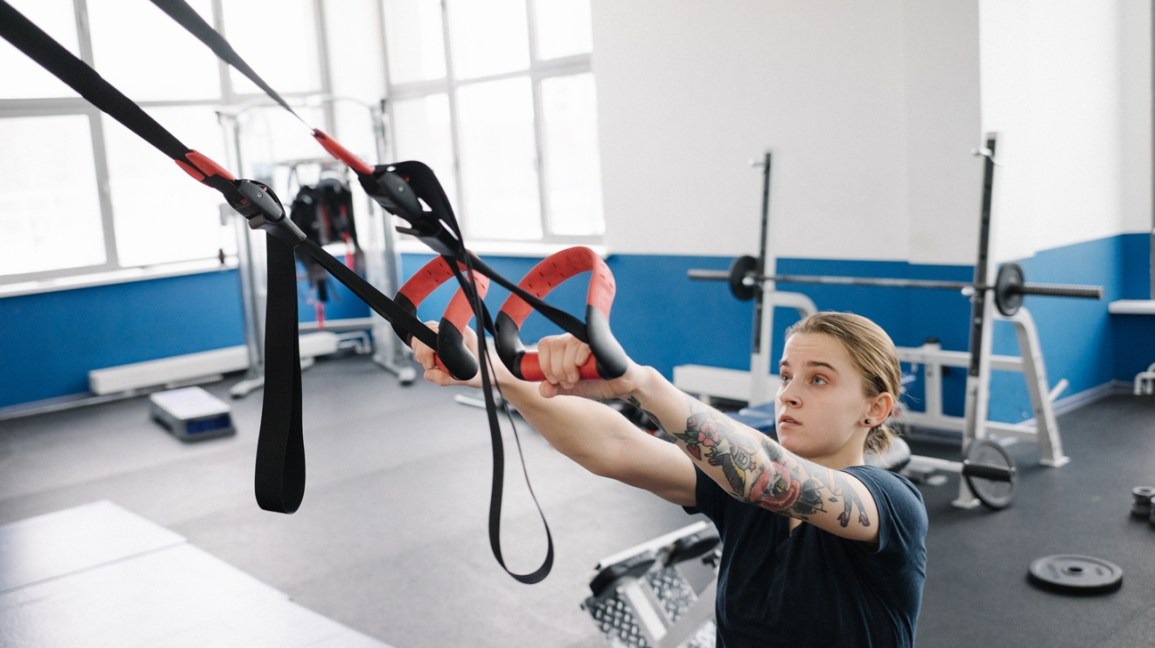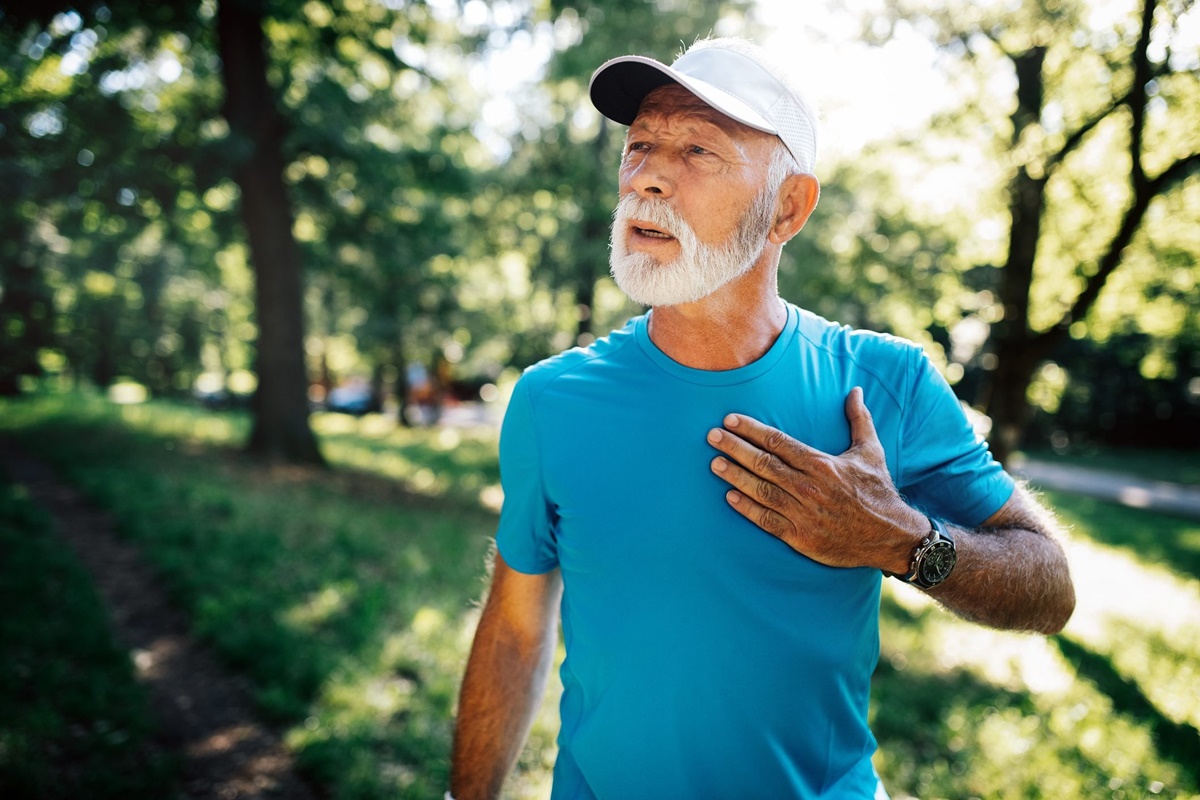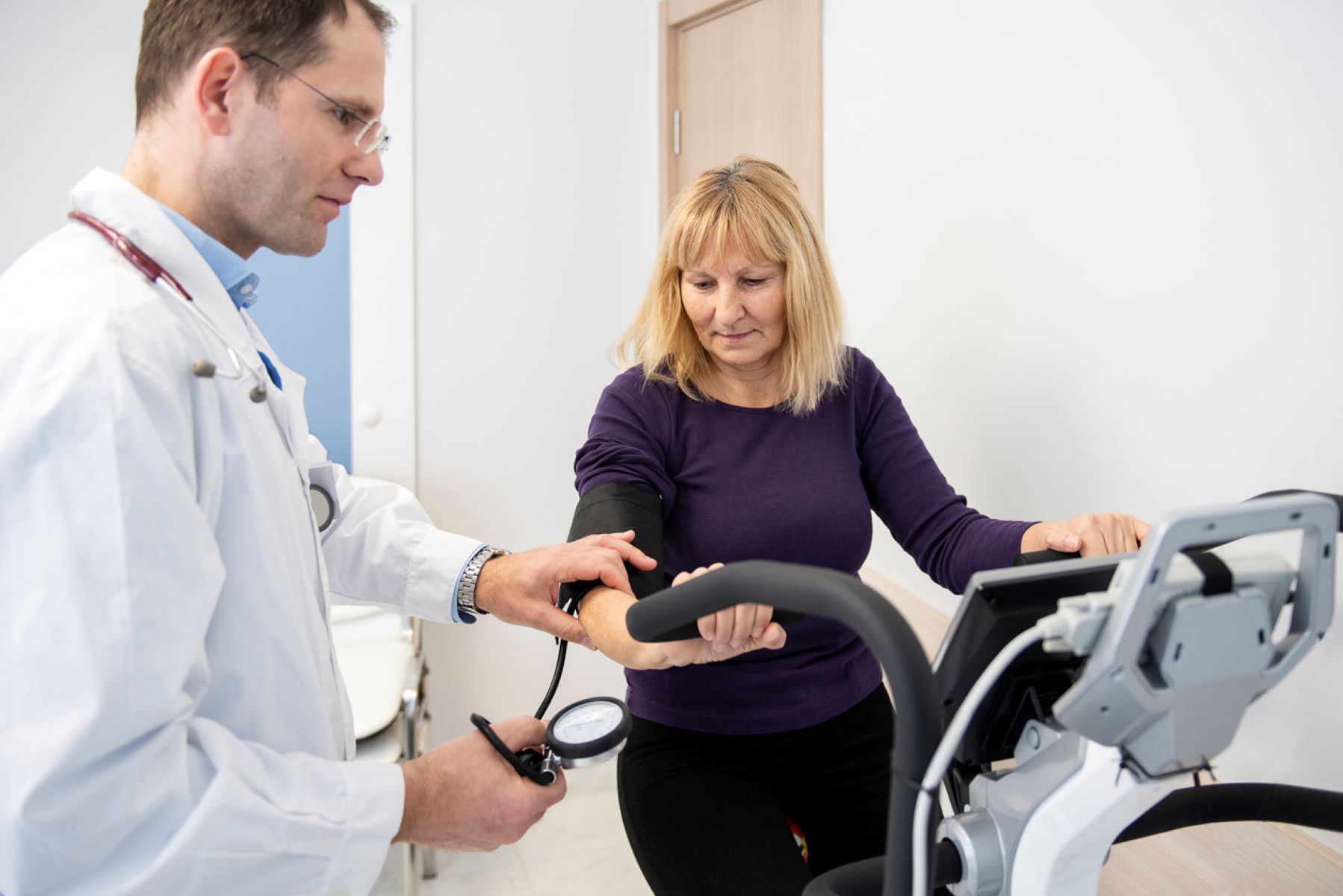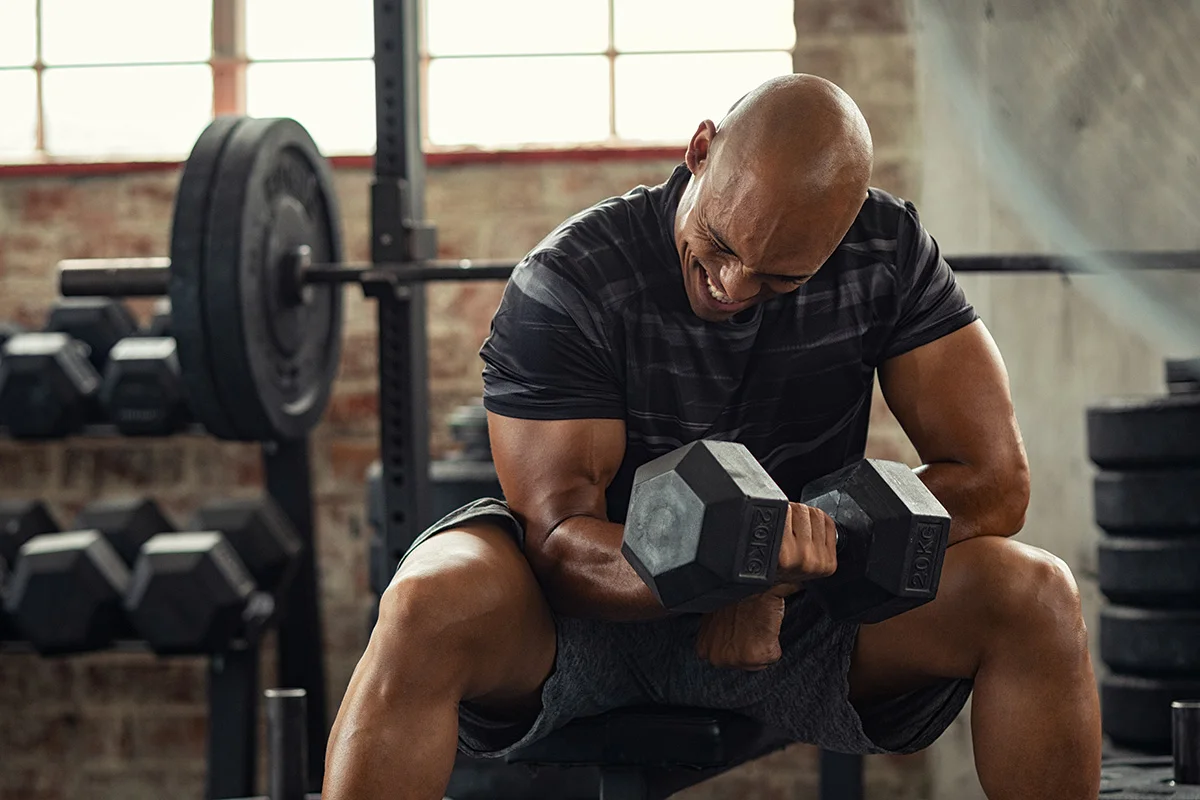Home>Misc>Featured>Why Does Breathing Rate Increase During Exercise


Featured
Why Does Breathing Rate Increase During Exercise
Published: October 3, 2023
Discover why breathing rate increases during exercise. Learn how the body adapts to physical activity and how it affects your respiratory system. Featured article.
Introduction
Breathing is an essential bodily function that ensures the supply of oxygen to the tissues and the removal of waste carbon dioxide. During exercise, our breathing rate naturally increases to meet the heightened demand for oxygen and to eliminate the increased production of carbon dioxide. This physiological response is essential to sustain physical activity and maintain overall health and performance.
The process of breathing involves the coordination of various muscles and the communication between the respiratory and nervous systems. Understanding why and how breathing rate increases during exercise can provide valuable insights into the body’s remarkable ability to adapt to different physiological demands.
This article aims to delve into the mechanisms behind the increase in breathing rate during exercise. We will explore the factors that contribute to this response, including the increased demand for oxygen, the elimination of carbon dioxide, the activation of respiratory muscles, and the role of the nervous system. Additionally, we will examine how exercise intensity and duration, as well as training, can influence breathing rate. By gaining a deeper understanding of these processes, we can appreciate the intricate interplay between our respiratory and cardiovascular systems during physical activity.
Mechanism of Breathing
The process of breathing, or respiration, involves the movement of air in and out of the lungs. It is driven by the contraction and relaxation of various muscles and the changes in pressure within the chest cavity.
When we inhale, the diaphragm, a dome-shaped muscle located at the base of the lungs, contracts and flattens. This action increases the volume of the chest cavity, causing a decrease in pressure within the lungs. To further expand the chest cavity, the rib muscles between the ribs contract, lifting the ribs and widening the chest. As a result, air is drawn in through the nose or mouth, down the trachea, and into the lungs.
During exhalation, the diaphragm and rib muscles relax, causing the chest cavity to decrease in volume. This leads to an increase in pressure within the lungs. The excess air, along with waste gases like carbon dioxide, is then pushed out through the airways and expelled from the body.
This coordinated movement of respiratory muscles and the changes in pressure allow for adequate ventilation of the lungs and allow the exchange of oxygen and carbon dioxide between the blood and alveoli, tiny air sacs within the lungs.
The process of breathing is controlled by the respiratory center located in the brainstem. This center receives inputs from various sensors in the body, including chemoreceptors that detect the levels of oxygen and carbon dioxide in the blood. Based on these inputs, the respiratory center adjusts the rate and depth of breathing to maintain optimal levels of oxygen and carbon dioxide.
In summary, the mechanism of breathing involves the contraction and relaxation of respiratory muscles, changes in pressure within the chest cavity, and the regulatory control of the respiratory center in the brainstem. This intricate process ensures the continuous exchange of gases necessary for cellular respiration and the functioning of our vital organs.
Factors Contributing to Increased Breathing Rate During Exercise
During exercise, several factors come into play, leading to an increase in breathing rate. These factors work together to ensure an adequate supply of oxygen to the working muscles and the removal of carbon dioxide, allowing for sustained physical activity. Let’s explore the main contributors to the increased breathing rate during exercise:
- Increased Oxygen Demand: When we engage in physical activity, our muscles require an increased supply of oxygen to produce energy. The increased breathing rate helps deliver more oxygen to the working muscles, ensuring their optimal performance and preventing the onset of fatigue.
- Removal of Carbon Dioxide: During exercise, the metabolic rate of the body increases, leading to the production of carbon dioxide as a byproduct. Breathing rate increases to eliminate this waste gas from the body, preventing its accumulation and maintaining the body’s pH balance.
- Activation of Respiratory Muscles: As exercise intensity increases, the demand for oxygen and the removal of carbon dioxide escalate. To meet this demand, the respiratory muscles, including the diaphragm and the intercostal muscles, work harder and contract more forcefully. This enhanced muscle activity contributes to the increased breathing rate during exercise.
- Role of Nervous System: The nervous system plays a crucial role in regulating breathing rate during exercise. When we start physical activity, the brain sends signals to increase the rate of breathing to match the body’s oxygen demand. This communication between the nervous system and the respiratory muscles ensures efficient gas exchange and maintains the body’s homeostasis.
These factors, working together, create a feedback loop between the body’s oxygen and carbon dioxide levels, the respiratory muscles, and the control center in the brain. This intricate coordination allows for an adaptive increase in breathing rate, ensuring adequate oxygen supply and efficient waste removal during exercise.
Increased Oxygen Demand
During exercise, our muscles require an increased supply of oxygen in order to generate the energy needed for physical activity. This heightened demand for oxygen is a key factor contributing to the increase in breathing rate.
When we engage in exercise, our muscles contract and work more vigorously. This increased muscle activity requires a greater supply of oxygen to support the metabolic processes involved in energy production. The oxygen is utilized in a series of chemical reactions that convert stored carbohydrates, fats, and proteins into adenosine triphosphate (ATP), which is the primary energy source for muscle contraction.
The increase in breathing rate during exercise is the body’s way of ensuring that a sufficient amount of oxygen reaches the working muscles. The deeper and more frequent breaths allow for greater oxygen uptake in the lungs and its transportation through the bloodstream to the muscle tissues.
Additionally, the increased breathing rate helps to match the supply and demand of oxygen. As the muscles work harder during exercise, they produce waste products, such as carbon dioxide. The elevation in breathing rate facilitates the removal of this waste gas, preventing its build-up and maintaining the acid-base balance in the body.
The specific intensity and duration of exercise influence the magnitude of the increase in breathing rate. Higher intensity activities, such as sprinting or high-intensity interval training, can lead to a more pronounced increase in oxygen demand, resulting in a higher breathing rate. On the other hand, low-intensity exercises, such as walking or gentle yoga, induce a moderate increase in breathing rate.
It is important to note that the body’s ability to increase oxygen supply during exercise is limited. There is a point beyond which further increases in breathing rate do not significantly enhance oxygen uptake. Maximum oxygen uptake, known as VO2 max, represents the upper limit of the body’s oxygen consumption ability during exercise.
In summary, the increased oxygen demand during exercise is a primary driver behind the increase in breathing rate. By delivering a greater supply of oxygen to the working muscles, the body ensures optimal energy production and performance during physical activity.
Removal of Carbon Dioxide
During exercise, the metabolic rate of the body increases, leading to the production of the waste product carbon dioxide. The increase in breathing rate plays a crucial role in eliminating this waste gas from the body.
Carbon dioxide is produced as a natural byproduct of cellular respiration. During exercise, the muscles work harder and require more oxygen to generate energy. As a result, metabolic reactions occur at a higher rate, leading to an increased production of carbon dioxide.
When carbon dioxide accumulates in the body, it can alter the pH level and disturb the acid-base balance. This can hinder muscle function and overall performance. Therefore, it is necessary to remove carbon dioxide efficiently, and an increased breathing rate helps achieve this goal.
The rise in breathing rate during exercise facilitates the removal of carbon dioxide through the respiratory system. The deeper and more frequent breaths increase the volume of air exchanged in the lungs, allowing for a greater elimination of carbon dioxide.
During exhalation, the increased breathing rate ensures that a higher amount of carbon dioxide is expelled from the lungs. This waste gas is transported from the tissues to the lungs via the bloodstream, where it diffuses across the lung membranes and is then exhaled.
The removal of carbon dioxide is essential not only to maintain the acid-base balance but also to regulate respiratory drive. Accumulation of carbon dioxide in the body triggers the respiratory center in the brainstem to increase the breathing rate, ensuring the elimination of the excess waste gas.
The rate of carbon dioxide removal is influenced by various factors, including exercise intensity and duration. Higher intensity exercise leads to a greater production of carbon dioxide, necessitating a more substantial increase in breathing rate to expel it efficiently.
It is worth noting that individuals who are more physically fit tend to have a more efficient respiratory system, allowing for a faster removal of carbon dioxide during exercise. Regular physical activity and training can enhance lung function and improve respiratory efficiency.
In summary, the increase in breathing rate during exercise plays a vital role in the removal of carbon dioxide from the body. By facilitating the elimination of this waste gas, the body maintains the acid-base balance and ensures optimal performance during physical activity.
Activation of Respiratory Muscles
During exercise, the activation of respiratory muscles is a crucial factor contributing to the increase in breathing rate. As the intensity of physical activity rises, the respiratory muscles work harder and contract more forcefully to meet the increased demand for oxygen and removal of carbon dioxide.
The primary respiratory muscles involved in breathing are the diaphragm and the intercostal muscles. The diaphragm, a dome-shaped muscle located at the base of the lungs, plays a significant role in the process of inhalation. When it contracts, it flattens, causing the chest cavity to expand and creating a negative pressure that draws air into the lungs. The intercostal muscles, located between the ribs, assist in expanding and contracting the chest cavity during breathing.
During exercise, the activation of these respiratory muscles is essential to increase the depth and rate of breaths. The increased demand for oxygen by the working muscles requires a more substantial volume of air to be drawn into the lungs with each breath.
The activation of the respiratory muscles during exercise is under the control of the nervous system. As physical activity begins, the brain sends signals to the respiratory muscles to contract more forcefully. This stimulation causes the diaphragm to move more extensively and the intercostal muscles to lift and expand the ribcage further.
The increased force of contraction in the respiratory muscles allows for a more efficient exchange of gases in the lungs. By creating a larger pressure gradient between the lungs and the surrounding air, more air is drawn into the lungs, delivering an increased supply of oxygen and facilitating the removal of carbon dioxide.
Furthermore, the activation of the respiratory muscles during exercise helps to enhance respiratory efficiency and reduce the workload on the respiratory system. Stronger and more toned respiratory muscles improve lung capacity and increase the overall efficiency of gas exchange.
Regular training and exercises targeted at strengthening the respiratory muscles, such as diaphragmatic breathing exercises or inspiratory muscle training, can lead to improved respiratory function. This can result in a more controlled and efficient breathing pattern during exercise, ultimately enhancing performance.
In summary, the activation of respiratory muscles is a critical factor in the increase in breathing rate during exercise. By working harder and contracting more forcefully, these muscles facilitate the intake of more oxygen and the removal of carbon dioxide, ensuring optimal gas exchange and respiratory efficiency during physical activity.
Role of Nervous System
The nervous system plays a crucial role in regulating breathing rate during exercise. It coordinates the communication between the brain, respiratory muscles, and various sensors in the body to ensure an appropriate and adaptive response to the increased physiological demands of physical activity.
When we begin to exercise, the brain receives signals from the body’s sensors, including chemoreceptors that detect levels of oxygen and carbon dioxide in the blood, as well as mechanoreceptors that sense changes in muscle activity and metabolic rate. These sensory inputs provide essential information about the body’s current state and oxygen needs.
Based on these signals, the brain’s respiratory center, located in the brainstem, sends out nerve impulses to the respiratory muscles, triggering an increase in breathing rate. This communication between the brain and the respiratory muscles ensures that an adequate supply of oxygen is delivered to the working muscles and that carbon dioxide is efficiently removed.
It is important to note that the nervous system adjusts breathing rate not only based on the body’s oxygen demand but also to maintain the acid-base balance. When carbon dioxide levels rise in the blood, chemoreceptors in the brainstem sense this change and stimulate an increase in breathing rate to eliminate the excess carbon dioxide through exhalation.
Additionally, the nervous system is responsible for regulating the depth of breaths during exercise. As physical activity intensity increases, the nervous system can modulate the depth of each breath, enabling the lungs to take in more air and deliver a greater volume of oxygen to the working muscles.
Furthermore, the nervous system also coordinates the timing and rhythm of breathing during exercise. The brainstem regulates the appropriate timing of inhalation and exhalation to maximize gas exchange and optimize respiratory efficiency.
Training and regular physical activity can influence the responsiveness of the nervous system. Individuals who engage in regular exercise develop a more efficient nervous system, allowing for better coordination of the respiratory muscles and a quicker adjustment of breathing rate in response to changing oxygen and carbon dioxide levels.
In summary, the nervous system plays a crucial role in regulating breathing rate during exercise. Through sensory inputs and nerve impulses, it coordinates the communication between the brain, respiratory muscles, and various sensors in the body. By adjusting breathing rate, depth, and timing, the nervous system ensures an appropriate response to the increased physiological demands of physical activity.
Influence of Exercise Intensity and Duration
The intensity and duration of exercise have a significant impact on breathing rate. As the intensity and duration of physical activity increase, the body’s demand for oxygen and the removal of carbon dioxide escalates, leading to corresponding changes in breathing rate.
Exercise intensity refers to the level of effort exerted during physical activity. Higher intensity activities, such as sprinting or high-intensity interval training, typically result in a more pronounced increase in breathing rate compared to lower intensity exercises, such as walking or gentle yoga.
During high-intensity exercise, the body’s oxygen demand rises rapidly to meet the increased energy requirements. To match this demand, breathing rate significantly increases to ensure an adequate supply of oxygen to the working muscles. The respiratory system works harder to deliver a larger volume of oxygen per breath, allowing for optimal oxygen uptake and energy production.
On the other hand, during low-intensity exercise, the increase in breathing rate is relatively modest. The oxygen demand is not as high, and the respiratory system can meet the body’s needs without requiring a significant increase in breathing rate.
Exercise duration also influences breathing rate. During short bursts of activity, such as a quick sprint or a brief weightlifting set, the increase in breathing rate is rapid and immediate. However, as exercise duration extends, the breathing rate may gradually increase to match the prolonged demand for oxygen and the removal of carbon dioxide.
Similarly, prolonged endurance activities, such as long-distance running or cycling, require sustained and steady breathing to ensure a continuous supply of oxygen and removal of carbon dioxide throughout the duration of the exercise. The breathing rate may remain elevated throughout the activity to maintain adequate oxygen uptake and waste removal.
It is important to note that individual fitness levels can influence the breathing response to exercise intensity and duration. Well-trained individuals, such as athletes, tend to have a more efficient respiratory system and may exhibit a lower increase in breathing rate compared to sedentary individuals during the same exercise intensity and duration.
In summary, the intensity and duration of exercise have a profound impact on breathing rate. Higher intensity activities and prolonged endurance exercises result in an increased oxygen demand, leading to a more pronounced increase in breathing rate. Understanding the influence of exercise intensity and duration on breathing rate can help individuals tailor their workouts and optimize their respiratory response during physical activity.
Training Effects on Breathing Rate
Regular training and exercise can have significant effects on breathing rate, leading to improvements in respiratory efficiency and a reduced resting breathing rate. These changes are a result of adaptations within the respiratory system that occur as a response to consistent physical activity.
One of the primary training effects on breathing rate is an increase in respiratory muscle strength and endurance. Regular engagement in exercises that target and strengthen the respiratory muscles, such as diaphragmatic breathing exercises or inspiratory muscle training, can lead to enhanced muscle function and increased respiratory efficiency. The respiratory muscles become more efficient at contracting and relaxing, allowing for a more controlled and efficient breathing pattern.
Additionally, training can improve lung function and capacity. Through regular aerobic exercises such as running, cycling, or swimming, the lungs become more efficient at oxygen intake and carbon dioxide removal. The increased lung capacity allows for a larger volume of air to be inhaled and exhaled with each breath, resulting in a lower breathing rate at rest and during exercise.
Training and regular physical activity can also lead to increased oxygen uptake by the muscles. This is achieved through improved oxygen extraction and utilization within the working muscles. As a result, the muscles become more efficient at using oxygen for energy production, reducing the demand for oxygen during physical activity.
Moreover, regular exercise can enhance respiratory control and coordination. The nervous system becomes more responsive and adept at regulating breathing rate and depth in response to changing demands. This leads to more precise and efficient adjustments in breathing rate during exercise, allowing for optimal gas exchange and respiratory efficiency.
It is worth noting that the training effects on breathing rate may vary depending on the individual’s starting fitness level, the type and intensity of training, and other factors such as genetics and age. However, consistent and targeted training can lead to improvements in respiratory function and a lower breathing rate both at rest and during exercise.
In summary, regular training has positive effects on breathing rate by improving respiratory muscle strength and endurance, enhancing lung function and capacity, optimizing oxygen uptake in the muscles, and enhancing respiratory control and coordination. These adaptations lead to a more controlled and efficient breathing pattern, resulting in improved respiratory efficiency and a reduced resting breathing rate.
Conclusion
The increase in breathing rate during exercise is a remarkable physiological response that ensures the delivery of oxygen to the working muscles and the removal of waste carbon dioxide. This increase is driven by various factors, including the increased demand for oxygen, the elimination of carbon dioxide, the activation of respiratory muscles, and the regulatory control of the nervous system.
The mechanism of breathing involves the coordinated contraction and relaxation of respiratory muscles and the changes in pressure within the chest cavity. This intricate process allows for the exchange of gases in the lungs and ensures the continuous supply of oxygen to the tissues.
During exercise, the increased oxygen demand by the working muscles stimulates an adaptive increase in breathing rate. The deeper and more frequent breaths facilitate the delivery of a sufficient amount of oxygen to support the metabolic processes involved in energy production.
Simultaneously, the removal of carbon dioxide is facilitated by the heightened breathing rate during exercise. By expelling this waste gas, the body maintains the acid-base balance and ensures optimal performance.
The activation of respiratory muscles plays a vital role in supporting the increased breathing rate during exercise. The respiratory muscles work harder and contract more forcefully to accommodate the heightened demand for oxygen and facilitate efficient gas exchange.
The nervous system acts as a control center, coordinating the communication between the brain, respiratory muscles, and various sensors in the body. It adjusts the breathing rate, depth, and timing to ensure an appropriate and adaptive response to the changing physiological demands of physical activity.
Additionally, exercise intensity and duration influence the magnitude of the increase in breathing rate. Higher intensity activities and prolonged endurance exercises necessitate a greater increase in breathing rate to meet the rising demand for oxygen and the removal of carbon dioxide.
Regular training and exercise can bring about positive changes in breathing rate by improving respiratory muscle strength and endurance, enhancing lung function and capacity, and optimizing respiratory control and coordination.
Understanding the factors influencing breathing rate during exercise enables individuals to tailor their workouts and optimize their respiratory response. By maximizing respiratory efficiency, individuals can enhance their exercise performance, endurance, and overall well-being.








